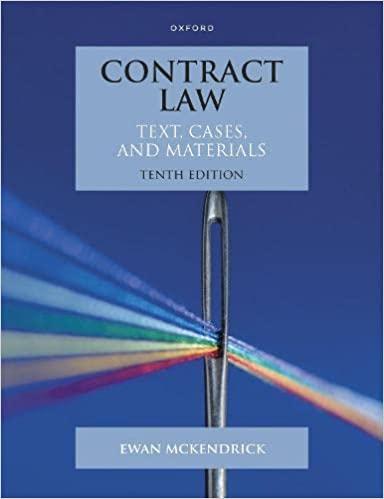Answered step by step
Verified Expert Solution
Question
1 Approved Answer
1. (A) Explain the following terms: 1. Pure Obligations 2. Conditional Obligations 3. Divisible Obligations 4. Indivisible Obligations. (B) Give an example of each. 2.
1. (A) Explain the following terms: 1. Pure Obligations 2. Conditional Obligations 3. Divisible Obligations 4. Indivisible Obligations. (B) Give an example of each. 2. (A) Differentiate an alternative obligation from a facultative obligation. (B) Give an example of each. 3. A, B, and C owe X, Y and Z, P3000. (A) What kind of obligation would this be, if A, B and C are liable each for P1K or just one-third of the whole indebtedness? (B) What kind of obligation is it if anyone of them (A,B or C) could be made or held liable for the whole P3K indebtedness? 4. (A) What are obligations with a penal clause? (B) Give an example. 5. (A) Enumerate the causes for the extinguishment of an obligation. (B) Explain the meaning of each. 6. How does novation happen? 7. What is meant by: (A) Depreciation/Betterment (B) Subrogation 8. What is Application of Payments? How does it work? 9. What do these terms mean: (A) Remission (B) Compensation (C) Donation
Step by Step Solution
There are 3 Steps involved in it
Step: 1

Get Instant Access to Expert-Tailored Solutions
See step-by-step solutions with expert insights and AI powered tools for academic success
Step: 2

Step: 3

Ace Your Homework with AI
Get the answers you need in no time with our AI-driven, step-by-step assistance
Get Started


